任意分数 Verilog 实现
网上常见的多为小数分频,分数分频也为有规律的分频,如 N/2、
M-1/N 等。而像 M/N 型分数分频却很少。现介绍一下本人的分数分频实现方法,
如果不当之处敬请指教。
分数分频实现基本上都是靠吞脉冲方法实现,如 5/2 分频,就可
以分成一个 2 分频,一个 3 分频接替出现,这样(2+3)/2 就是 5/2 分频。
下面以 68/9 为例介绍下怎么计算。
68=9*7+5,即商为 7,余数为 5。可以推出 68/9 分频,可以看成
5 个 8 分频和 4 个 7 分频,即(5*8+4*7)/9=68/9。这个 7 分频和 8 分频中的数
字 7 和 8 就是从商中得出来的。那 5 个 8 分频和 4 个 7 分频中的数字 5 和 4 就是
从余数中的出来的,5 是余数,4 是(9-5)。
分 子 : numerator 。 分 母 denominator 。 商 quotient 。 余 数
remainder。(翻译不是很准确,表达下意思就行了,呵呵)。
numerator=quotient*denominator+remainder.那么 numerator/
denominator 分频就可以通过 remainder 个(quotient+1)分频和(denominator
-remainder)个 quotient 分频组成。
还是以 68/9 为例。我们得出了 5 个 8 分频和 4 个 7 分频可以实现
这个分数分频,但这 5 个 8 分频和 4 个 7 分频怎么放置呢?
先放 5 个 8 分频,再放 4 个 7 分频,这样绝对是不行的。为了均
匀的放置这两种频率,我从小数分频中学到一种方法。找个临时变量 temp(程
序中用的是 sum)。初始化为 0。每次分频完让它加上余数,判断是否大于分母,
如果小于分母,择输出 7 分频,否则输出 8 分频,并且将这个值减去分母(让它
小于分母)。这样 temp 值就变成了 5 1 6 2 7 3 8 4 0 5……
分频值就成了 7 8 7 8 7 8 7 8 8 7 8 7 8 7 8 7 8 8……可以统计一下 7 分频
和 8 分频的比例就正好是 4:5,这样就实现了分数分频。
程序如下所示:
输入信号:clk,rst,clkin(要分频的时钟信号),numerator(分子), denominator,
(分母)
输出信号:pulse
中间信号:quotient(商),remainder(余数)等
hightime 为输出信号 pulse 输出高电平时间,可控制占空比
�
/*************************************************
//module name:fredivAB
//designer:kang
//date:2010-10-08
//version:1.00
*************************************************/
module fredivAB(
//input signals
clk,
rst,
clkin,
numerator,
//fenzi
denominator,
//fenmu
//output signals
pulse
);
input clk;
input rst;
input clkin;
�
input [15:0] numerator;
input [15:0] denominator;
output pulse;
reg pulse;
//parameter HIGHTIME=16'd2;
wire [15:0] quotient;
//shang
wire [15:0] remainder;
//yushu
reg ina;
reg inb;
reg upclk;
reg counter_clkin;
reg [15:0] counter;
reg [15:0] divnum;
reg [15:0] sum;
reg flag;
reg [15:0] counter_pulseh;
wire [15:0] hightime;
assign quotient=(denominator)?numerator/denominator:16'h0;
assign remainder=(denominator)?numerator%denominator:16'h0;
assign hightime={1'b0,quotient[15:1]};
�
//assign hightime=16'h1;
//save the prior and current state of clkin
always @(posedge clk or negedge rst)
begin
if(!rst)
else
end
begin
ina<=0;
inb<=0;
end
begin
ina<=clkin;
inb<=ina;
end
//check posedge pf clkin
always @(posedge clk or negedge rst)
begin
if(!rst) upclk<=0;
else if(!inb&ina) upclk<=1'b1;
else upclk<=0;
end
�
//fre div counter
always @(posedge clk or negedge rst)
begin
if(!rst)
begin
counter<=0;
end
else if(counter==divnum) counter<=16'h0;
else if(upclk) counter<=counter+1'b1;
else counter<=counter;
end
always @(posedge clk or negedge rst)
begin
if(!rst)
begin
sum<=0;
flag<=0;
end
else if(counter==divnum)
begin
if((sum+remainder)>=denominator)
//fenmu
begin
�
sum<=sum+remainder-denominator;
flag<=1;
end
begin
else
sum<=sum+remainder;
flag<=0;
end
end
end
always @(posedge clk or negedge rst)
if(!rst) divnum<=0;
else if(flag) divnum<=quotient+1'b1;
else divnum<=quotient;
//counter_plush
always @(posedge clk or negedge rst)
begin
if(!rst) counter_pulseh<=hightime+16'h1;
else if((counter==divnum)&&divnum) counter_pulseh<=0;
else if(upclk) counter_pulseh<=counter_pulseh+1'b1;
end
�
//pulse produce
always @(posedge clk or negedge rst)
if(!rst) pulse<=1'b0;
else if(counter_pulseh<=(hightime-1)) pulse<=1'b1;
else pulse<=1'b0;
endmodule
在此附上仿真波形
�
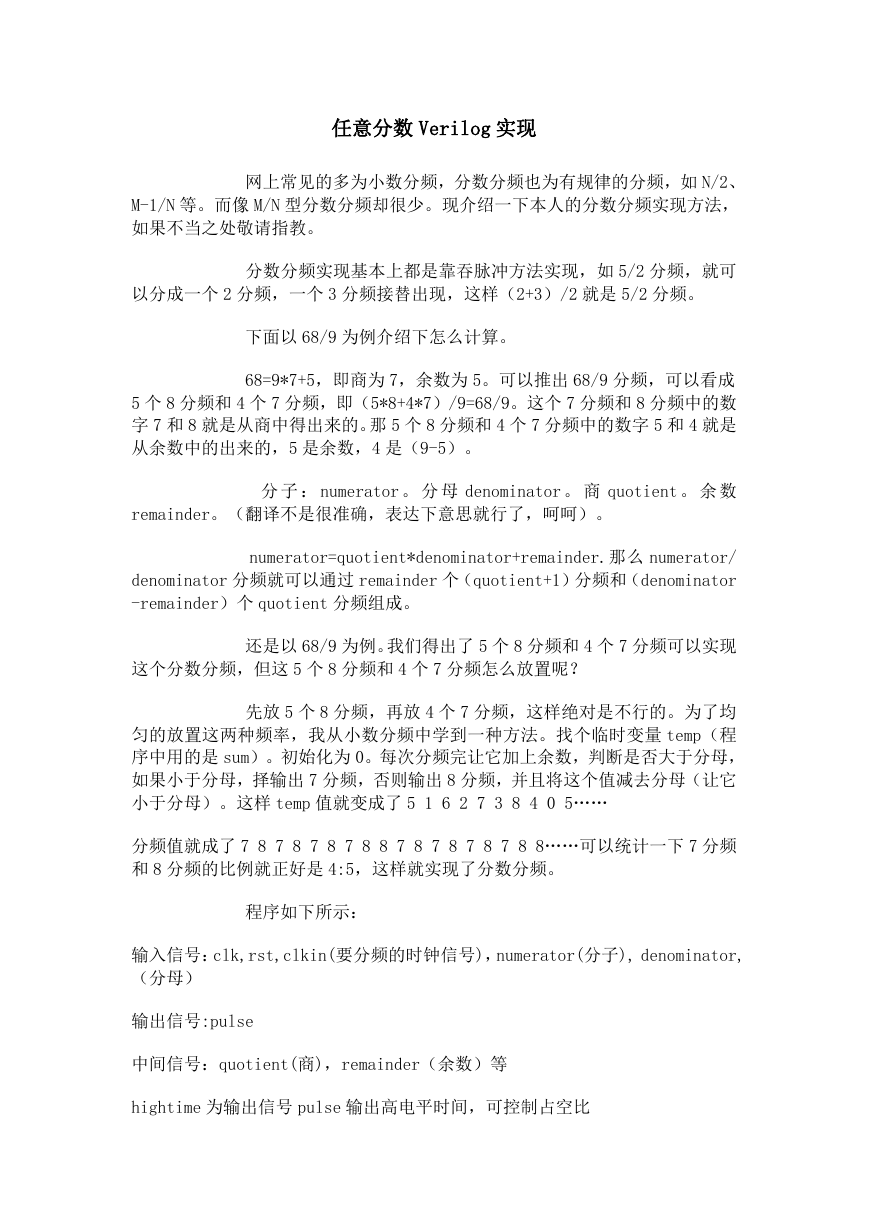
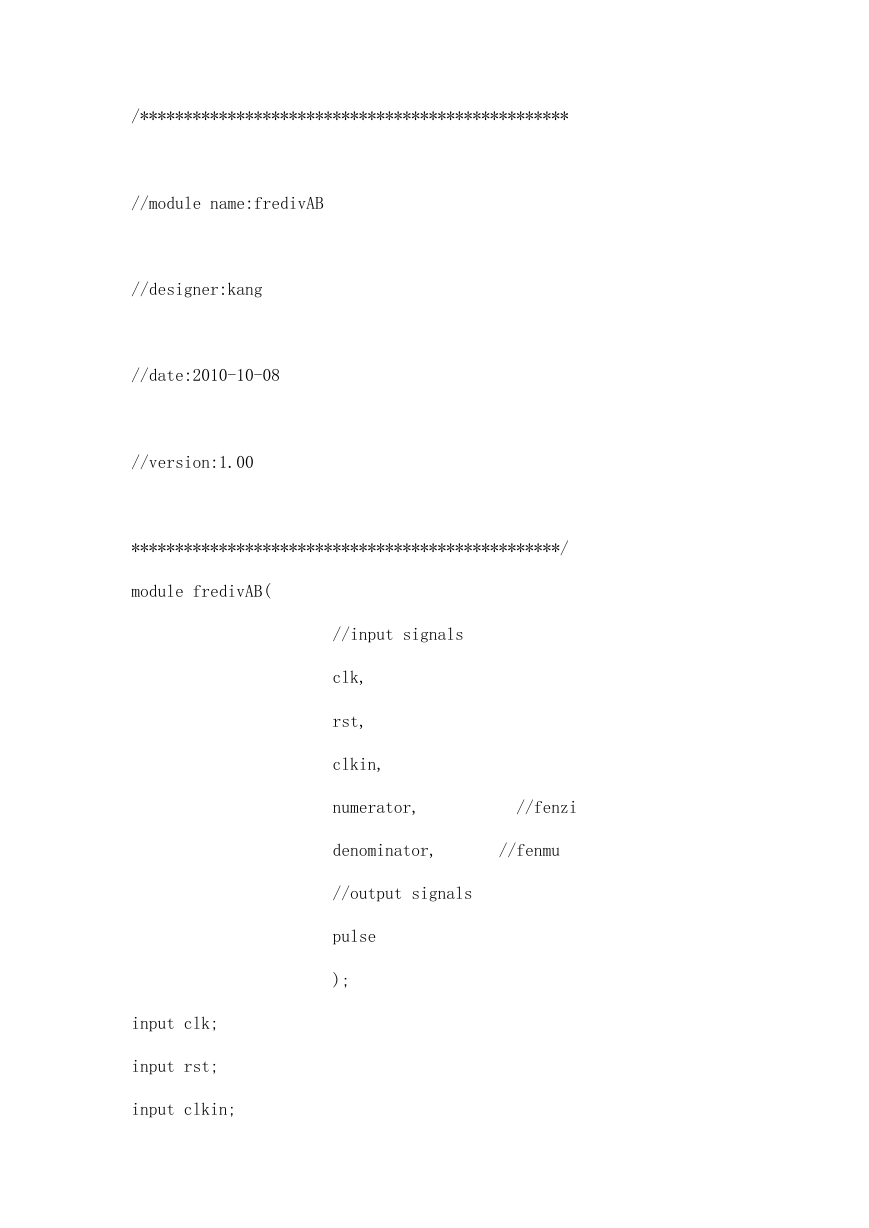
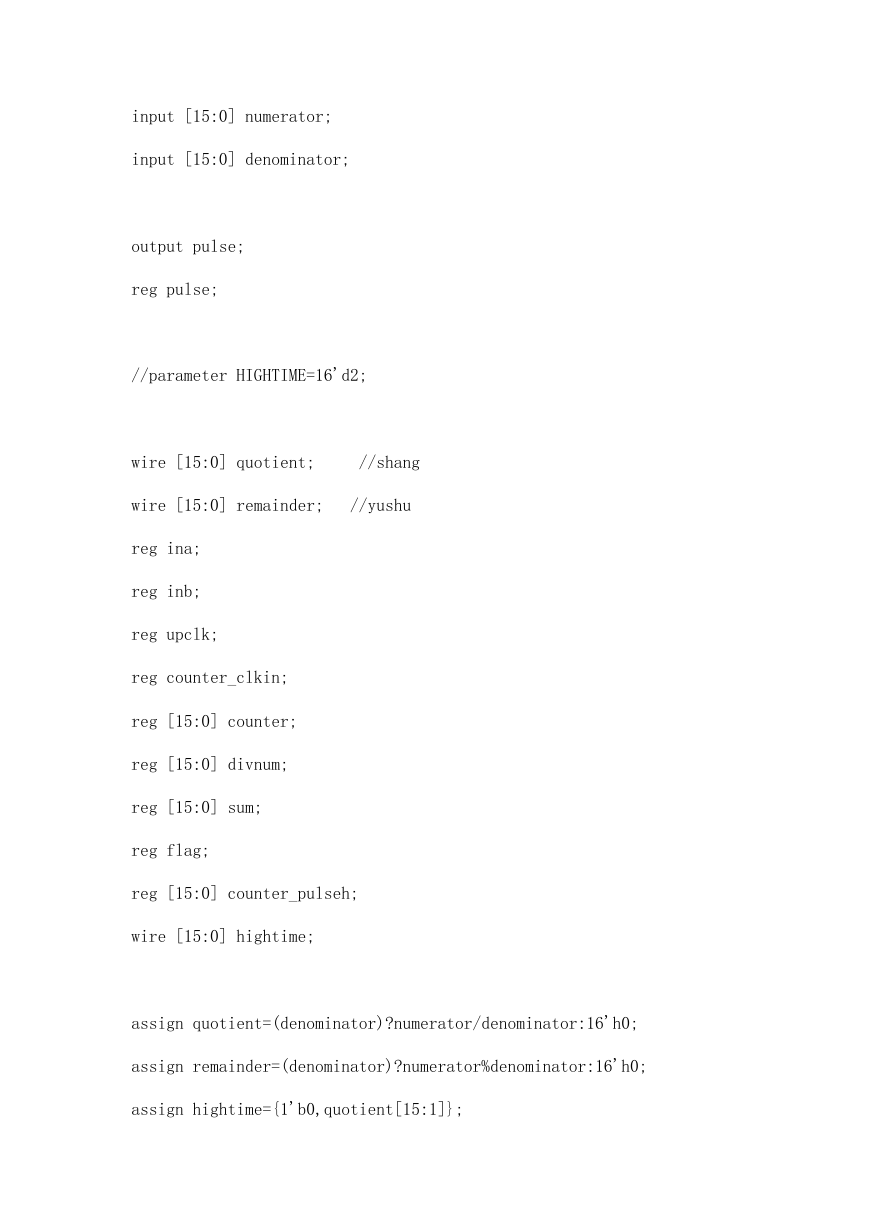
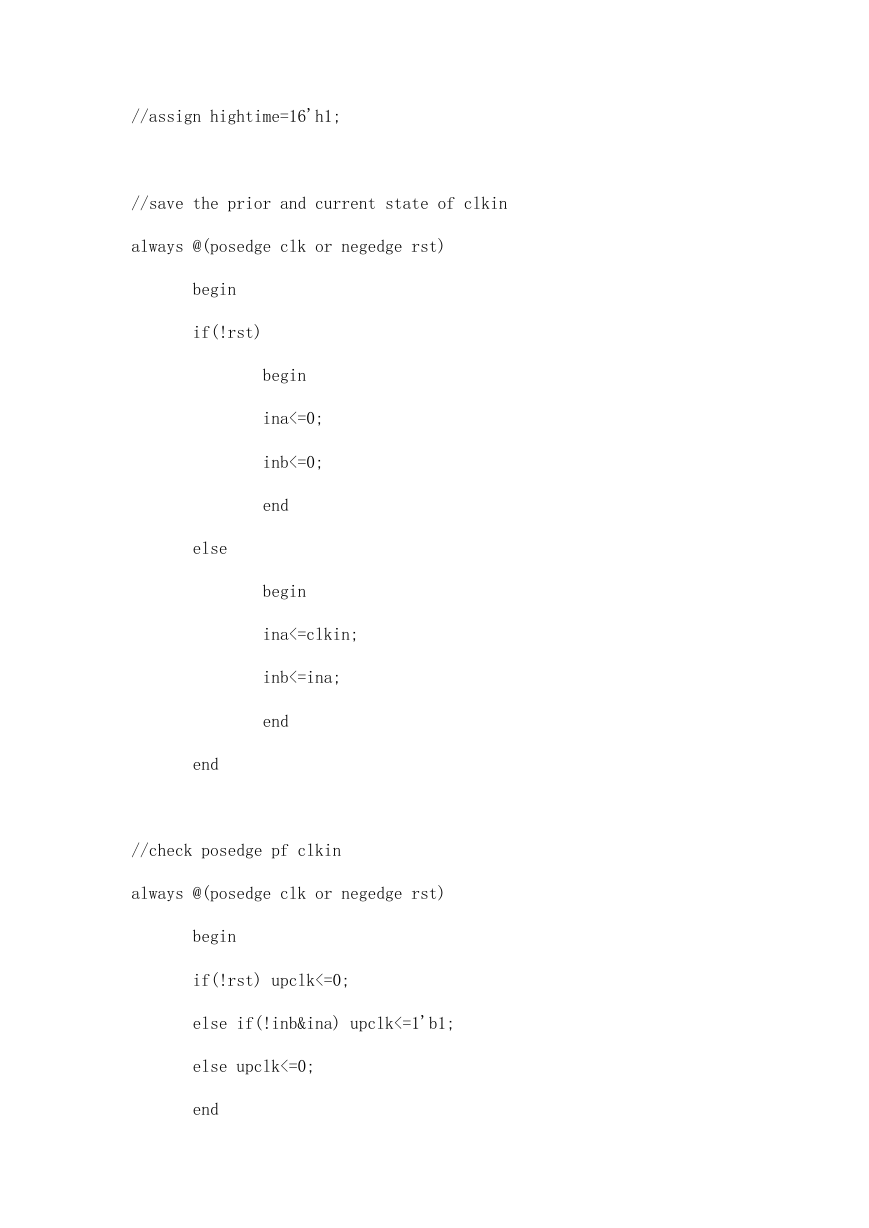
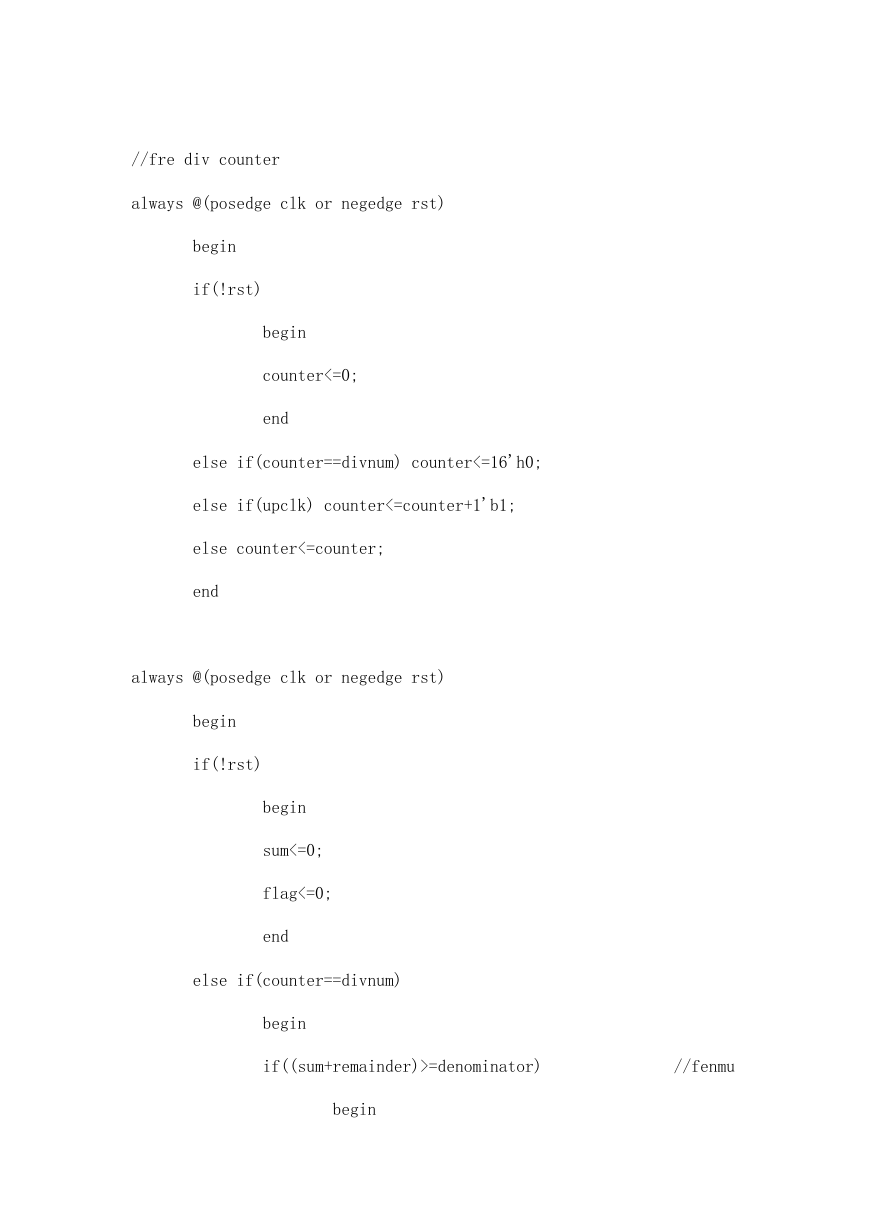
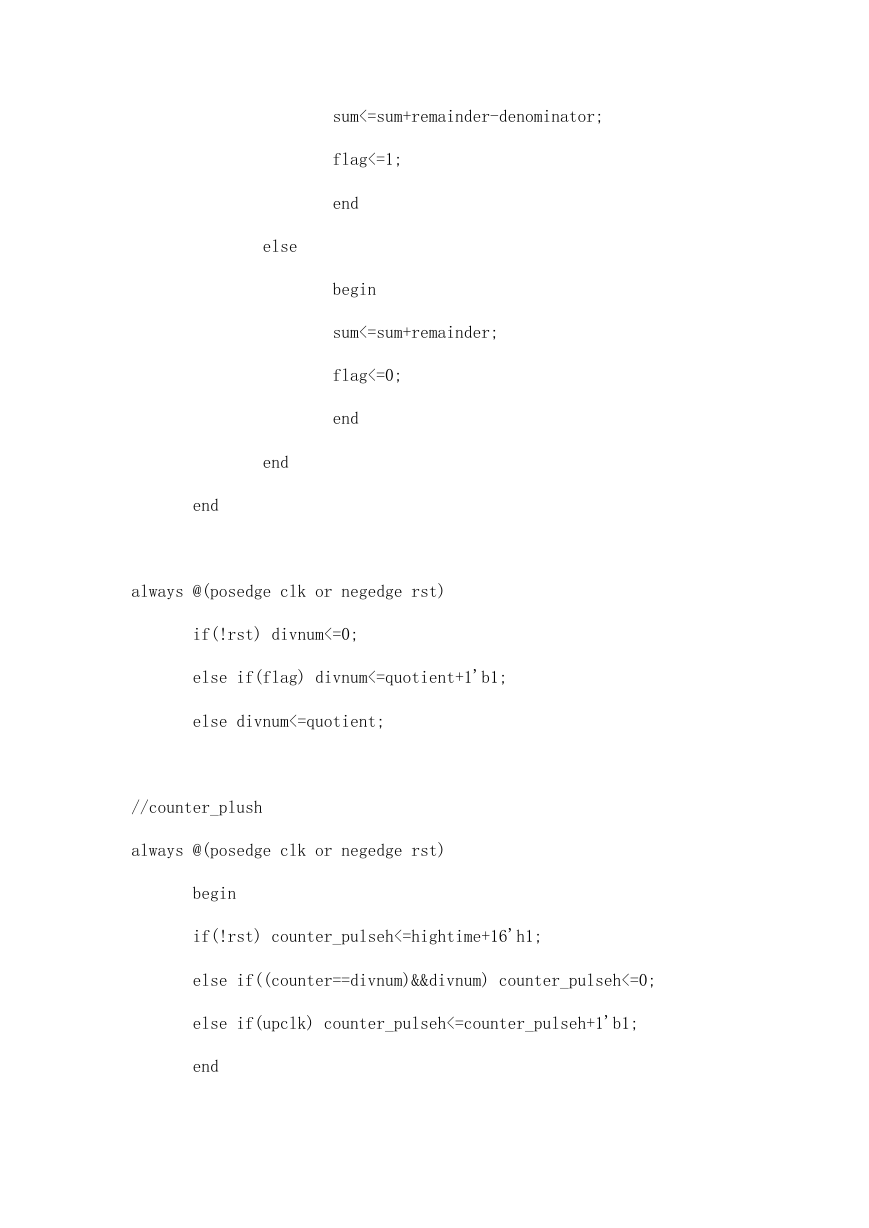
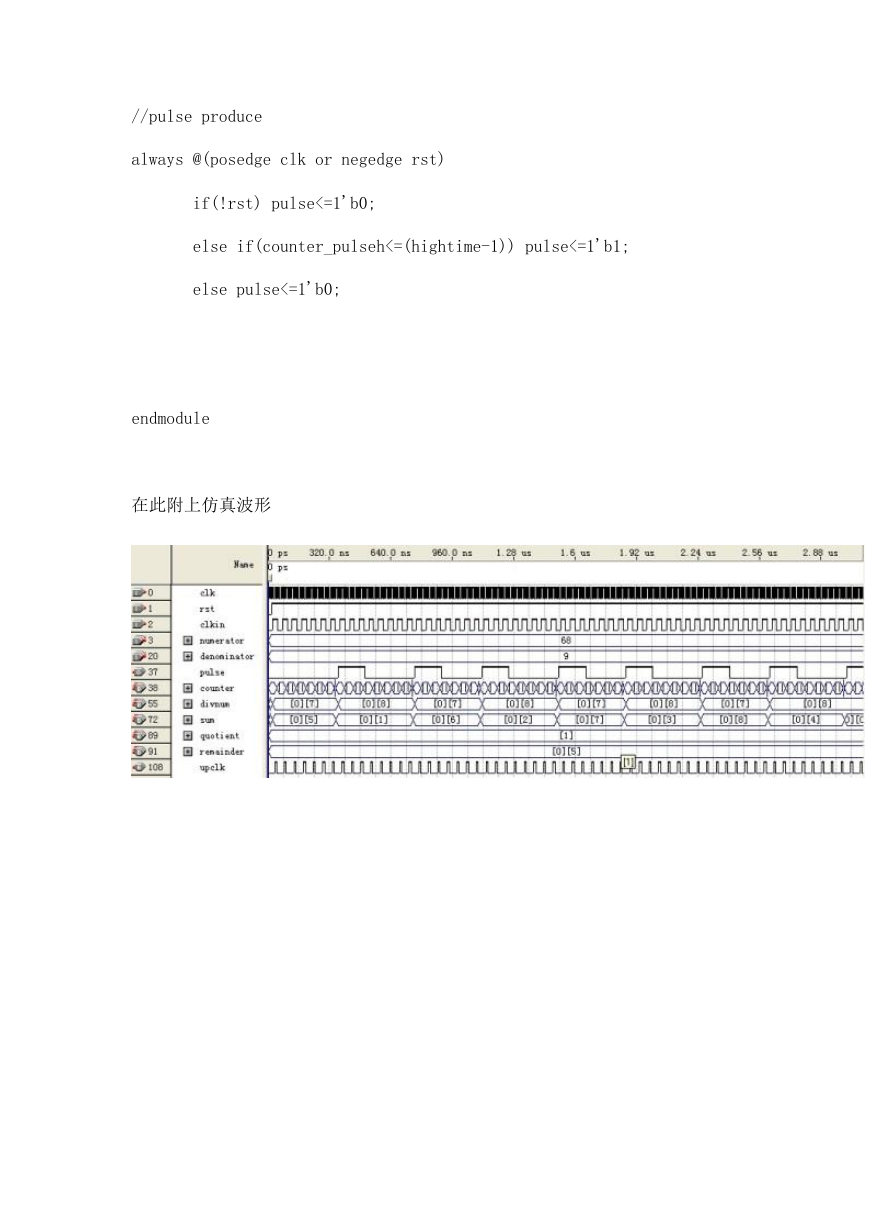







 2023年江西萍乡中考道德与法治真题及答案.doc
2023年江西萍乡中考道德与法治真题及答案.doc 2012年重庆南川中考生物真题及答案.doc
2012年重庆南川中考生物真题及答案.doc 2013年江西师范大学地理学综合及文艺理论基础考研真题.doc
2013年江西师范大学地理学综合及文艺理论基础考研真题.doc 2020年四川甘孜小升初语文真题及答案I卷.doc
2020年四川甘孜小升初语文真题及答案I卷.doc 2020年注册岩土工程师专业基础考试真题及答案.doc
2020年注册岩土工程师专业基础考试真题及答案.doc 2023-2024学年福建省厦门市九年级上学期数学月考试题及答案.doc
2023-2024学年福建省厦门市九年级上学期数学月考试题及答案.doc 2021-2022学年辽宁省沈阳市大东区九年级上学期语文期末试题及答案.doc
2021-2022学年辽宁省沈阳市大东区九年级上学期语文期末试题及答案.doc 2022-2023学年北京东城区初三第一学期物理期末试卷及答案.doc
2022-2023学年北京东城区初三第一学期物理期末试卷及答案.doc 2018上半年江西教师资格初中地理学科知识与教学能力真题及答案.doc
2018上半年江西教师资格初中地理学科知识与教学能力真题及答案.doc 2012年河北国家公务员申论考试真题及答案-省级.doc
2012年河北国家公务员申论考试真题及答案-省级.doc 2020-2021学年江苏省扬州市江都区邵樊片九年级上学期数学第一次质量检测试题及答案.doc
2020-2021学年江苏省扬州市江都区邵樊片九年级上学期数学第一次质量检测试题及答案.doc 2022下半年黑龙江教师资格证中学综合素质真题及答案.doc
2022下半年黑龙江教师资格证中学综合素质真题及答案.doc